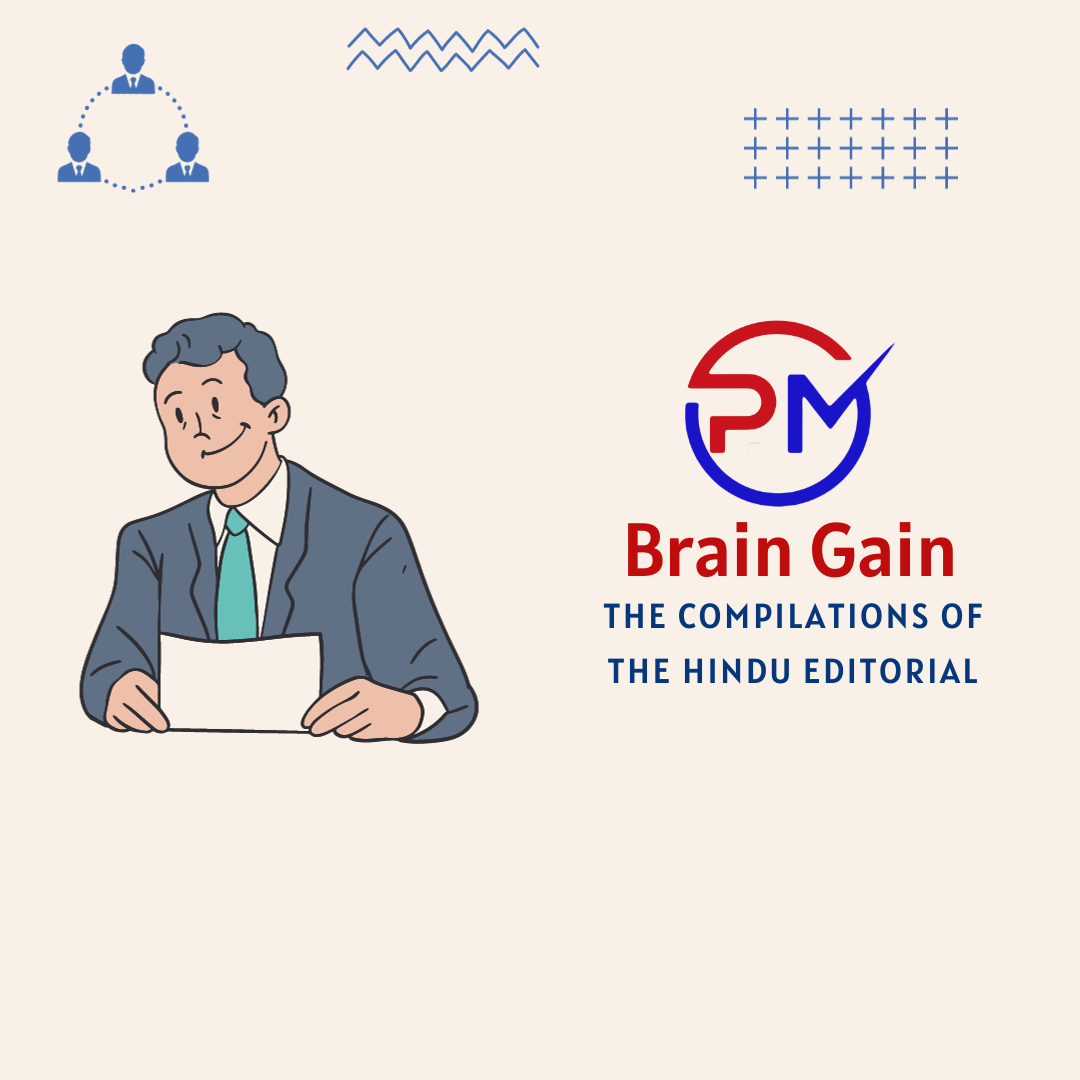Editorial 1 : The many grave risks confronting the world today
Introduction:
- Europe, Asia, and Africa seem to be in a state of permanent dissonance today, while North and South America are plagued by problems of varying magnitude. All this has set the stage for multipolar disorder.
Multipolar disorder
- The attack on the State of Israel by Hamas, a Palestinian terror outfit, however, represents a new high in the evolution of terrorism. That a little acknowledged Palestinian terror outfit could take on Israel, which boasts of one of the most powerful armies in the world, is having a seismic impact across the world. Hence, there appears to be no end in sight to the challenges posed by fanatic groups intending to achieve their ends and reinforce their beliefs.
- The attack on Ukraine by Russia starting February 2022, though, falls into a different category, viz., of conventional conflicts, but is nevertheless highly disconcerting. The prolongation of the conflict, which was not expected to last for more than a few weeks, to well over 18 months, represents an even more disturbing trend.
- Even as the war continues to fester, neither Russia nor Ukraine (including NATO) is willing to consider a pause. A plethora of new technologies and strategies have proved insufficient to sort out matters on the battlefield. With each month, the risk of a wider conflagration is going up, and the conflict shows few signs of reaching a resolution.
- A new battleground has opened up very recently in West Asia, following the terror attack by Hamas on Israel, which is turning into an all out conflict. Several weeks into the conflict, the threat of an all out war (in a region that has seldom had long periods of peace) looms large. The two state solution for resolving the Palestinian conflict has, in turn, been confined to the detritus of history and the region is all set for another half a century of conflict.
- Abraham Accords and other peace accords have fallen like ninepins. A massive United States Naval deployment, from the Mediterranean to the Gulf of Oman, in the wake of the Hamas-Israel conflict, has the potential of bringing Iran- backed Shia militant organisations (such as the Hezbollah) directly, and Iran at a later date, into the conflict. This would substantially alter the nature of the conflict and could lead to unpredictable consequences.
Uneasiness in the Indo-Pacific region
- Notwithstanding the West Asia imbroglio, it is the uneasy situation in the IndoPacific region that contains even greater potential for a wide ranging conflict — one that could well involve the U.S. and China directly. This region is already a byword for strategic competition and contestation.
- As it is, the U.S. and China have little space for cooperation here, as elsewhere, but both now seem intent on enlarging the scope of their conflict. The U.S. appears to think that with China’s growth having slowed, accompanied by its inability to get advanced technology from the West, it now has the upper hand.
- China, for its part, is vigorously pursuing its two contradictory goals viz., to checkmate the ‘U.S.dominated world order’ and in turn ensure the success of a China-dominated order. Issues such as Taiwan are, hence, not receiving the attention they deserve.
- As of now, the West is merely intent on replicating the tactics it employed in Ukraine to stymie Russia’s advance, in the IndoPacific, ignoring the fundamental difference that exists between the situation in Europe and in the IndoPacific at present.
- The East, for instance, has no military arrangement like the NATO and has at best some loose untested security arrangements (such as AUKUS and the Quad) to confront China.Equally important is that few countries in Asia are ready for a military confrontation with China.
Technology risks
- Additionally, in the category of grave risks that confront the world today are many that belong to the technology domain — more specifically Artificial Intelligence (AI) and cyber. Even as the digital threat scene has verily exploded, digital uncertainty is making a mockery of the established order.
- As growing numbers of people, cognitively and psychologically, become dependent on digital networks, many critical aspects of their thinking and functioning would be conditioned by AI. The emergence of generative AI will be the real game changer, and experts predict that the situation could become even more critical in the near future. The real risk is that it could alter the very fabric of nation states, with truth itself becoming a casualty — the deepfake syndrome.
- The use of AI, especially for military and security purposes, is cause for utmost concern. AI is capable of being vitiated, and subject to different types of ‘adversarial attacks’ viz. ‘poisoning’ (which typically aims to degrade a module’s ability to make relevant predictions), ‘backdooring’ (which involves a malicious trigger input that causes the AI module into misclassifying inputs), ‘evasion’, etc.
- The need for extreme caution, hence, cannot be overemphasised. The cyber domain and the cyber threat again pose serious security risks. The world is already aware of threats such as Ransomware and Phishing, as also the Zero day syndrome, but there is much more to come.
- Digital trackers logged more than 5.5 trillion cyberattacks worldwide in 2021 (over 14.5 billion attacks per day). Since then, the scale of attacks has been increasing in geometrical progression. The twin threats from AI and cyber are thus poised to emerge as the biggest dangers we face and will be the critical elements in future wars.
- Meanwhile, quantum computing is another dimension that is likely to transform the world. Quantum’s unique ability to crunch stacks of data is already reshaping certain designated sectors. Quantum AI simulation denotes a mind boggling degree of effectiveness and efficiency but there are equally intrinsic risks attached to it.
- Another domain of global risk is health, for as humanity advances, health has become a critical factor of everyday existence. The COVID-19 pandemic has been characterised as among the world’s worst epidemics. The health forecast is that more such epidemics are slated to occur.
Conclusion:
- In the final reckoning, many experts are of the view that climate change and climate change health issues will be among the biggest global risks as the 21st century advances.
Editorial 2 : It’s time to revamp the structure of the Supreme Court
Context:
- Supreme Court (SC) of India has three jurisdictions under the Constitution: original, appellate, and advisory. The Supreme Court serves as a Constitutional Court as well as a Court of Appeal. The Court sits in benches of varying sizes, as determined by the Registry on the directions of the Chief Justice of India (CJI), who is the Master of the Roster.
Constitution Benches of the Supreme Court
- Article 145(3) of the Constitution provides for the setting up of a Constitution Bench. It says a minimum of five judges need to sit for deciding a case involving a “substantial question of law as to the interpretation of the Constitution”, or for hearing any reference under Article 143, which deals with the power of the President to consult the Court.
- A constitution bench typically comprises 5, 7 or 9 judges who deliberate on a specific issue related to constitutional law. Usually, cases before the SC are heard by Division Benches (2 judges) or full Benches (3 judges) to examine a wide range of topics.
- Under its very broad jurisdiction, the Supreme Court has entertained frivolous public interest litigations (PILs), such as demands that passages be deleted from the Quran or secularism be removed from the Preamble to the Constitution.
- This is why, at present, there are 79,813 cases pending before the 34 judges of the Supreme Court. It is therefore understandable that there has been demand time and again for a structural change in the top court.
- Recently, CJI D.Y. Chandrachud announced his intent to create Constitution Benches of varied strengths as a permanent feature of the Court.
Discourse on a separate Constitution Bench
- In 1984, the Tenth Law Commission of India proposed that the SC be split into two divisions: the Constitutional Division and the Legal Division. The proposal stated that only issues pertaining to constitutional law would be brought to the proposed Constitutional Division.
- It was reported that appeals in the top court mostly comprised matters from High Courts that are closer to the Supreme Court. That is, appeals from the Punjab and Haryana High Court, Allahabad High Court, and Delhi High Court formed the major chunk of matters, whereas courts far away from the apex court had fewer appeals filed, due to both difficulties in accessibility and costs.
- Earlier, in Bihar Legal Support Society case (1986), the SC stated that it was “desirable” to establish a National Court of Appeal that would be able to entertain special leave petitions. This would allow the SC to only entertain constitutional and public law related questions.
- The 229th Law Commission Report (2009) recommended four regional benches to be located in Delhi, Chennai or Hyderabad, Kolkata, and Mumbai to hear non constitutional issues. It recommended 6 judges from each region at four regional benches take up appellate responsibility, with a Constitution Bench in New Delhi working on a regular basis. By dividing the heavy backlog of nonconstitutional cases among regional benches, the SC, it said, could “deal with constitutional issues and other cases of national importance on a day-to-day basis.”
Evolution of SC:
- During colonial times, there were three Supreme Courts: in Bombay, Calcutta, and Madras. SC, as we know it now, was founded on January 28, 1950, under Article 124 of the Constitution, two days after India became an independent, democratic republic. It came into being in Delhi as a result of Article 130.
- The first Supreme Court included 8 judges, including the CJI. As the workload rose year after year and arrears of cases began to accumulate, Parliament periodically kept increasing the number of judges; the latest being 34 in 2019.
- An overburdened court Today’s Supreme Court issues around 810 decisions each year through Constitution Benches of five or more judges. It serves primarily as an appeals court. Only 4 of the 1,263 decisions issued in 2022 were issued by a Constitution Bench.
Way forward:
- SC hears matters between the Centre and the States, as well as between two or more States; rules on civil and criminal appeals; and provides legal and factual advice to the President. Any person can immediately petition the Supreme Court if they consider their basic rights have been infringed.
- The work of the SC could be split so that there is a Final Court of Appeal and a permanent Constitution Bench. This would ensure greater judicial stability and consistency by explicitly distinguishing cases filed under constitutional authority from those filed under appellate and review jurisdiction. A Constitution Bench (Vasanth Kumar v. H.C. Bhatia case) is analysing these issues and contemplating measures to protect a citizen’s basic right to access the Supreme Court.
Conclusion:
- Under the guidance of the CJI, there is an opportunity to address this structural gap in the Supreme Court by designating several of the court’s appeal benches as regional benches.

